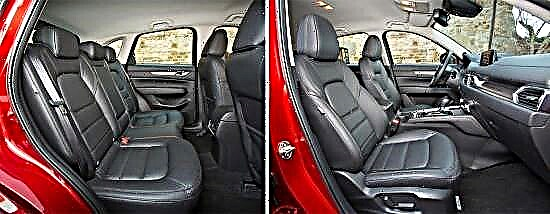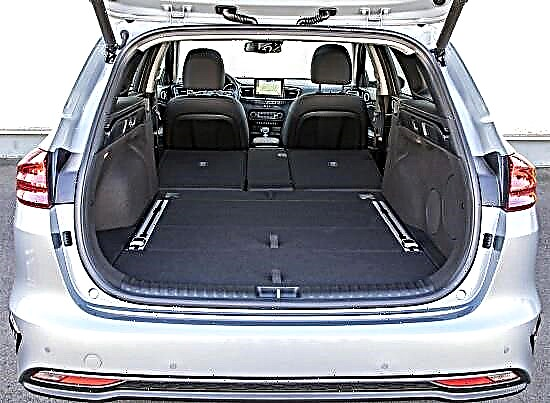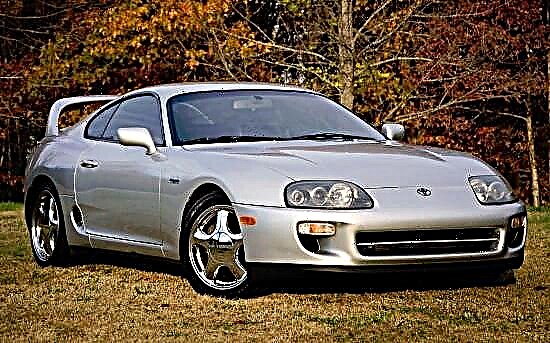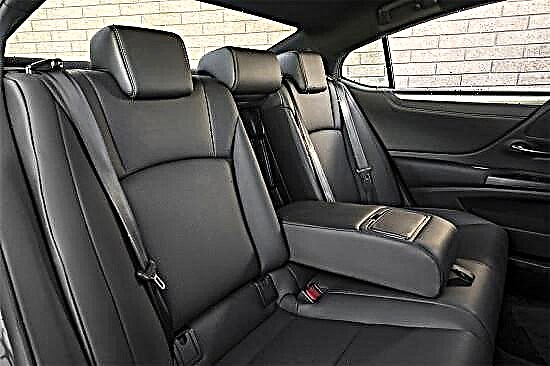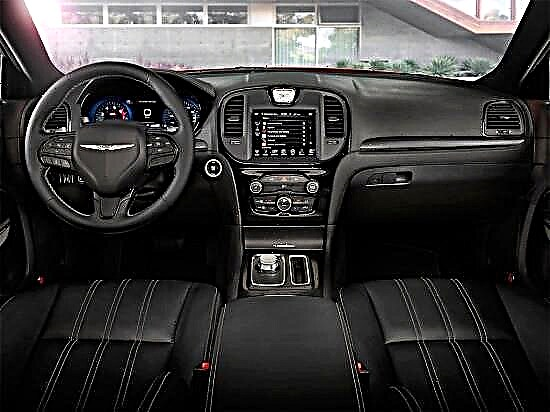Ratings of cars and auto products
Reviews, comparisons & tips for motorists
Car tires do not belong to the category of automotive consumables, but solely because of their high cost. In fact, they have to be changed quite often, with an aggressive driving style - almost every year. But even a neat driver, choosing a new set of tires, always has certain difficulties, their assortment is so extensive. At the same time, products from well-known brands bite in price, and it is scary to buy budget products from little-known manufacturers.
As a rule, the owner's manual describes in sufficient detail exactly which standard sizes are suitable for your car, but this does not mean that the use of tires with other characteristics is impossible.
And if there is a desire to modernize them, then among the many questions, the one that concerns the width of tires, especially winter ones, looks quite reasonable. We will try to clarify what to give preference to, wide or narrow tires.
What is meant by the width of the tire, how to find out this parameter
The width of a tire is the distance between its outer side surfaces when the tire is inflated to optimum pressure. In some cases, the width of the tire can be measured with high accuracy - if the tread goes into the side part at a right angle. But this is not always the case, there are tires with beveled edges, in which case the tread width does not correspond to the tire width.
This parameter is always indicated in the tire label, along with the rim diameter and the profile height. In the designation 185 / 65R15, it is the first digit that is the width of the rubber. This value is in millimeters, while the rim diameter is in inches. Note that for safety reasons, the width of the tire should not exceed the width of the rim of the wheel rim by more than 30%.
If this proportion is not observed, then an oversized tire will be prone to self-disassembly, which entails extremely dangerous and unpleasant consequences, especially if it happened at high speed. The second significant disadvantage of tires that are too wide is the high probability of getting damage to the surface, including through, when hitting a curb or even when the car is turning sharply.
What affects the width of the tire
In theory, the width of the tire should be the same as the width of the tread. In fact, with high-quality tires, this ratio is fully maintained. In any case, the area of contact of the tire with the road surface to the greatest extent depends on this indicator.
And the following indicators, in turn, depend on the size of the contact spot:
- vehicle stability (especially when driving on road sections with difficult terrain);
- the length of the stopping distance;
- fuel consumption;
- the level of comfort of the driver / passengers.
In general, reducing the width of the rubber has a positive effect on fuel consumption, since less effort is required to overcome frictional forces. With active / aggressive driving, wide tires prevent wheel slip during a sharp start from a standstill, and reduce the heating of the rubber. In winter, the use of narrow tires allows you to increase the pressure per unit area of the road surface, which is good when driving through mud and loose snow. On slippery surfaces (ice, water film), it is better to ride on wide rubber, which increases the friction force in proportion to the increase in the contact area.
But this is all theory. Why wide and narrow tires are good in winter, we will consider in more detail later, conducting their comparative testing.
Advantages and disadvantages of narrow tires
For most car owners, the purchase of narrow car tires of the standard sizes recommended by the manufacturer is a forced measure, the result of a financial deficit. Situations when a driver deliberately purchases narrow tires are not so common. This is a consequence of the widespread opinion that narrow tires are not only worse in their consumer qualities, but also look much less presentable.
In fact, tires with a small tread width have their advantages, which in fact turn out to be even more than disadvantages.
So, let's list the advantages of narrow tires:
- affordable cost as the main argument for the bulk of motorists;
- less effort is required to turn the steering wheel (relevant for models without power steering);
- the effect of aquaplaning is reduced when driving on a wet road;
- the weight of the wheel and the entire vehicle is reduced;
- a narrow wheel behaves more predictably in a deep rut;
- reduced rolling friction coefficient;
- reduced fuel consumption.
Disadvantages:
- at speed, the car becomes less controllable;
- exchange rate stability also suffers;
- acceleration dynamics becomes worse;
- braking distance - increases;
- narrow tires are less aesthetically pleasing.
From all of the above, we can conclude that if the mode of operation of the car involves high-speed driving, wide tires are better than narrow ones in summer. All of the above pluses together weigh much less cons. As for the situation in winter, we will talk about this a little later.
When wide tires are preferred
Since wide tires are a kind of antipode to narrow ones, almost all the advantages and disadvantages are the same here, but with a minus sign. Despite its popularity, this type of tire does not always improve the comfort and safety of movement, while exceeding the permissible tire width for a particular car model is highly undesirable, since the recommended values are calculated taking into account the power of the power unit and the weight of the vehicle.
Advantages of wide tires:
- gorgeous appearance;
- excellent behavior of the car when driving at high speed;
- improved acceleration dynamics;
- increasing the directional stability of the machine;
- reduced stopping distance.
But at the same time, the number of shortcomings is also considerable:
- a wide wheel is much heavier than a narrow one (considering that there are four of them on the car);
- on a wet track, the likelihood of falling into aquaplaning increases;
- on a wet road surface, the braking distance is increased;
- the load on the suspension and other undercarriage components increases;
- fuel consumption is getting higher;
- the cost of wide tires is noticeably higher.
As you can see, all of the above factors are diverse, have different weight and significance. To get a better idea of which tires are better in winter, wide or narrow, just listing their pros and cons may not be enough.
Therefore, we decided to acquaint you with the results of a comparative testing carried out on a Volkswagen Golf of the 7th generation, while the participants in the test were three sets of winter tires Nokian Hakkapeliita 8 with the width recommended by the automaker: R15 (standard size 195 / 65R15), R16 (205 / 55R16) and R17 (tires 225 / 45R17). All tires were rolled-in before the test, having covered the same distance (100 km).
Testing was carried out at a test site owned by the Nokian company (near the Finnish villages of Saarisela and Ivalo). It is interesting that the weight of the largest tire was 1.7 kilograms more than that of the 195 / 65R15, but when the wheel was “shod”, the difference turned out to be more significant - 4.65 kg. (due to the greater weight of the rim). It is easy to calculate that the total weight of the car from this increased by 18.5 kg.
Acceleration / braking on a snowy track
Since this model is equipped with an ABS system, the measurement of indicators (at least during the braking phase) is carried out with greater accuracy. For each of the sets of tires, more than ten acceleration / deceleration cycles were carried out, with the car accelerating to 45 km / h, and then braking up to 5 km / h on the packed snow.
It turned out that the acceleration dynamics of our subjects differed insignificantly, and the fastest, as expected, were 195 / 65R15 tires. The shortest braking distance was demonstrated by 205 / 55R16 tires, with narrow tires it turned out to be 40 centimeters longer.
A test on loose snow on a winding forest road showed that the 195 / 65R15 tires did not perform well in terms of handling. On sharp turns, the car was almost guaranteed to skid, and the stabilization time after that turned out to be too long. However, oversteer, which is dangerous for the average driver, yielded the best results in terms of track time.
The 205 / 55R16 tires turned out to be the most comfortable and obedient. Almost neutral understeer does not require much skill from the driver when completing a high-speed maneuver - the electronics will do everything for you.
Tires 225 / 45R17 when driving in a straight line behaved no worse than R16. But when entering a high-speed turn, the rear of the car abruptly falls into a skid, and with a maximum amplitude. The time to cover the distance in this case turned out to be the worst.
From all this, the conclusion suggests itself that standard tires are better in winter - narrow and wide ones show much worse results:
- narrow tires 195 / 65R15 contributed to the appearance of oversteer when driving on snow, which is why the car often tried to turn around in tight turns;
- the opposite situation was observed for wide tires of dimension 225 / 45R17 - understeer as a result of insufficient adhesion to the road surface;
- tires 205 / 55R16 turned out to be the best prepared for the passage of a difficult track, if a skid did occur, it began smoothly, and the driver had time to take appropriate measures.
Acceleration and braking on ice
For the purity of the experiment, the tests were carried out on the ice of a lake completely cleared of snow, and after the control runs, the length of the spikes was measured.
The test parameters remained the same: acceleration to 31 km / h, and after the sound signal was triggered, immediately braking to 5 km / h.
There were no problems with overclocking on R16 rubber - the spikes bite well into the ice, providing sufficient grip without slipping. Braking also happened without drifts. On 195 / 65R15 tires, the results were only slightly worse.
But on the widest rubber, the distance traveled both during acceleration and during braking turned out to be noticeably large.
So, the debate about which winter tires are better, narrow or wide, this time ended in favor of the first. The difference in stopping distance between 195 / 65R15 and 205 / 55R16 tires turned out to be insignificant (about 3%), but on wide tires the braking distance was 2 meters longer. It is noteworthy that the measurement of the stud protrusion showed quite interesting results: the largest protrusion was recorded on a tire of average width - exactly 1 mm, on a wide tire it was 0.9 mm, on a narrow one - 1.1 mm.
Nokian engineers claim there is a direct relationship between stud length and stopping distance. Tests have shown that if there is a correlation, then it is not at all direct - after all, the R15 and R16 tires showed approximately the same results.
Handling on ice
Separately, tests were carried out on the handling of the car when driving on an icy road. Again - on the lake, while after each test drive the track was cleared of ice crumbs. And again, at the end, the length of the protruding part of the thorns was measured.
To eliminate the influence of the electronics, the ESP system has been disabled (by removing the corresponding fuse).
Driving on wide tires did not please - the grip on the ice turned out to be unimportant, and the car itself was not confident on the road, trying to go into a skid, then into demolition. The steering wheel also turned out to be quite sensitive: when a certain threshold effort is exceeded, the connection with the front wheels disappears. The result is disappointing: moving even at low speed, the car constantly slid in the rear, trying to turn 180 degrees.
Driving on ice was much easier on 195 / 65R15 tires, which were narrower but higher in height - the car was much calmer when driving in a straight line. But cornering, especially at high speeds, turned out to be insufficient understeer, because of which the rear axle was demolished, and without having special driving skills, it is not easy to correct the situation.
The tires 205 / 55R16 proved to be the best - the car behaved more predictably both on the straight line and when cornering. As a result, the best lap time.
The conclusion is again unequivocal: narrow tires in winter again turned out to be better than wide ones. However, on 195 / 65R15, due to understeer, inexperienced drivers can still have problems. As for the 225 / 45R17 tires, they showed an unstable behavior of the car with a tendency to turn around the rear axle, as if it were a rear-wheel drive vehicle. The situation can be corrected in the standard way - turning the steering wheel in the direction of a skid, but you need to turn it as quickly as possible. But sometimes the front of the car also starts to demolish.
Brief summary
You can buy all tires in the online store or Yandex.
So which tires are better in winter, narrow and tall, or wide, low-profile?
Narrow tires work well on ice, but on snow they are not the best choice, as they can cause a breakdown in even not very high-speed corners. Since they have a fairly high profile, the steering wheel has to be turned at a slightly greater angle than usual. In short, narrow tires are recommended for use only on vehicles equipped with ESP.
Wide tires turned out to be even worse: due to the increased contact area, the specific pressure exerted by the tire on the ice decreases, as does the efficiency of the studs. Even the presence of the exchange rate stability system does not help here. So in winter, no matter what type of road you travel more, on snow or ice, we do not recommend “changing” your car into wide low-profile tires.
But regular tires hold the road the best, which is to be expected. So if safety comes first for you in winter, don't experiment with rubber. And if you really want to, leave this activity until the onset of the warm season.

